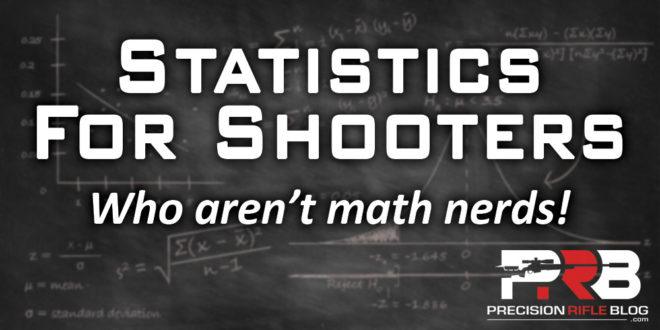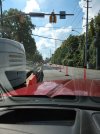It can work but not always the quickest approach. If you follow Litz and his research at the USAF each bullet has an optimal velocity for stabilization and accuracy. Those numbers are normally not published numbers as they come from third party's like Litz. And although every barrel is different and bullets perform different in each. I search and research what the specific bullet I'm going to use to get a rough idea of what velocity it likes ( rough idea) that is my projected velocity so I work up to that point, then start on seating depth usually working down starting at 0.002 from the lans. After getting a fairly decent performing load I may go back and tweak the powder to see if it can be fine tuned. Just my method and seems to work for me. I have picked Brian's brain a little more than I should have!Over on Snipers Hide forum a recommended load development approach is to first chose a velocity and then adjust seating depth to tune the load. From your experience, does this a actually work?
I suppose if you were using compatible powder for the cartridge and bullet, and chose an appropriate velocity, it could work.
You are using an out of date browser. It may not display this or other websites correctly.
You should upgrade or use an alternative browser.
You should upgrade or use an alternative browser.
Question about a load development method ....
- Thread starter ShtrRdy
- Start date
 Help Support Long Range Hunting Forum
Help Support Long Range Hunting Forum
Welderboy11972
Well-Known Member
MagnumManiac
Well-Known Member
- Joined
- Feb 25, 2008
- Messages
- 5,569
Wow, why do so many of you guys think a velocity window is where a bullet is most accurate?
A bullet will be accurate in many different velocity windows, this is why once you determine best seating depth at a moderate velocity window, which is coarse seating depth testing, that it will hold true throughout the rest of the testing.
Primer, powder and seating depth testing done initially are coarse testing.
Fine testing is primer seating depth and powder variation.
It is very rare that a seating depth needs changing after initial testing finding the best depth.
If you use a tuner, then this fine testing may not be necessary at all.
It's funny, I see Eric Cortina, Ryan Furman and others all shooting with their Labrador's set up every session.
I do all my testing without a chrono, only once I have found best seating depth, best primer and primer crush, best powder do I get my 2 chrono's out and start seeing what numbers I get. I already know what pressures I'm running, the Pressure Trace is invaluable for my testing, even without knowing the velocity…
My 6.5x47 Lapua is the easiest tuning cartridge I have ever used, even easier than the 6.5x55 Swede. I can almost use any correct burn rate powder, primer and bullet and tune it just with the tuner, don't even need to do a seating depth test, just jam and go.
Sometimes, we look into stuff too much and just make it more complex that it needs to be. I am guilty of this too.
My 338-416 Rigby Improved is a perfect example, I made it more complex than it needed to be by concerning myself with CBTO and building the rifle, chamber and brass to suit this parameter, I should have just built the rifle, then cut the chamber and whatever the CBTO was going to be with the bullet, as it is a single shot anyway and the rifles magazine is moot in this application, and just let it be what it was going to be. Now I am restricted on OAL by the throat that I cut, which is now at it's end of life and I can't setback and recut the chamber because of my design choices.
At 900+ rounds, it is very tired and doesn't produce the desired precision anymore.
It's still accurate, but has more fliers and will not respond to fine seating tuning, so it's done in my eyes.
Had fun with it, it turned my hair greyer, and gave a learning curve that I now use on all my precision rifles, whether that is for comp or hunting makes no difference, same testing for either.
Cheers.
A bullet will be accurate in many different velocity windows, this is why once you determine best seating depth at a moderate velocity window, which is coarse seating depth testing, that it will hold true throughout the rest of the testing.
Primer, powder and seating depth testing done initially are coarse testing.
Fine testing is primer seating depth and powder variation.
It is very rare that a seating depth needs changing after initial testing finding the best depth.
If you use a tuner, then this fine testing may not be necessary at all.
It's funny, I see Eric Cortina, Ryan Furman and others all shooting with their Labrador's set up every session.
I do all my testing without a chrono, only once I have found best seating depth, best primer and primer crush, best powder do I get my 2 chrono's out and start seeing what numbers I get. I already know what pressures I'm running, the Pressure Trace is invaluable for my testing, even without knowing the velocity…
My 6.5x47 Lapua is the easiest tuning cartridge I have ever used, even easier than the 6.5x55 Swede. I can almost use any correct burn rate powder, primer and bullet and tune it just with the tuner, don't even need to do a seating depth test, just jam and go.
Sometimes, we look into stuff too much and just make it more complex that it needs to be. I am guilty of this too.
My 338-416 Rigby Improved is a perfect example, I made it more complex than it needed to be by concerning myself with CBTO and building the rifle, chamber and brass to suit this parameter, I should have just built the rifle, then cut the chamber and whatever the CBTO was going to be with the bullet, as it is a single shot anyway and the rifles magazine is moot in this application, and just let it be what it was going to be. Now I am restricted on OAL by the throat that I cut, which is now at it's end of life and I can't setback and recut the chamber because of my design choices.
At 900+ rounds, it is very tired and doesn't produce the desired precision anymore.
It's still accurate, but has more fliers and will not respond to fine seating tuning, so it's done in my eyes.
Had fun with it, it turned my hair greyer, and gave a learning curve that I now use on all my precision rifles, whether that is for comp or hunting makes no difference, same testing for either.
Cheers.
oneeyejohn
Well-Known Member
One point I have found that is a must for me. I must make good records of my handloads for each rifle or pistol. If have specific powder and bullet combinations for one rifle that I shoot different bullet weights for different reasons, I must keep a specific record for that handload. If I don't I will get them mixed up and waste bullets, powder, rifle wear and time. Records save me a lot of frustration and waist.
nealm66
Well-Known Member
Definitely. I keep a notepad for each rifle and all the bullet, brass, velocities etc. that go with it. Really comes in handy with multiple rifles and if/when changes are wanted.One point I have found that is a must for me. I must make good records of my handloads for each rifle or pistol. If have specific powder and bullet combinations for one rifle that I shoot different bullet weights for different reasons, I must keep a specific record for that handload. If I don't I will get them mixed up and waste bullets, powder, rifle wear and time. Records save me a lot of frustration and waist.
GRT has and obt plugin tool built in.I've tried this a few times and couldn't get it to work for me. How have you been getting the estimated barrel time number? If quickload, are you using the 10% to bullet exit number?
Its hard to get the hammers to shoot bad though. Depth doesnt seem to matter.
ShtrRdy
Well-Known Member
GRT has and obt plugin tool built in.
Its hard to get the hammers to shoot bad though. Depth doesnt seem to matter.
What does 'GRT' stand for?
Gordon's Reloading Tool. Similar to WuickLoad with aditional options but stil in development, I like it so far and I also use QuickLoadWhat does 'GRT' stand for?
UncleDano
Well-Known Member
can you tell me what SD & ES stand for?It's a little more complicated than just picking a velocity. It's finding a load with the best SD and ES, then fine tuning the powder charge and seating depth to tighten the group.
Extreme spread and standard deviationcan you tell me what SD & ES stand for?
UncleDano
Well-Known Member
What is Es/ds ?I've picked velocity and used a tuner to get accuracy with excellent success. Be similar to seating depth but pressure doesn't change and I keep the coal that cycles or in the case of hammers, keeps me in the groove ha ha! I've seen guys struggle trying to get groups to tighten using seating depth and I suspect it has to do with bullet design. I've used a .01-.02 ladder up or down from my desired velocity and that works just as well for me. Es/ds seems to be fine with high end scales and good brass prep. Ive never paid attention to flat spots, always searched for accuracy first
QuietTexan
Well-Known Member
What is Es/ds ?

How To Predict The Future – Statistics For Shooters Part 1
I actually believe the average shooter might get more value from this Statistics for Shooters serie...
nealm66
Well-Known Member
Es/ds ,It's the variation in velocity.
nealm66
Well-Known Member
If you use a ballistic app you can decide if it's having much effect at your desired hunting range. It can cause groups to grow. If you have a good tune, it has less effect but always good to keep each round as close as possible
Similar threads
- Replies
- 70
- Views
- 40K
